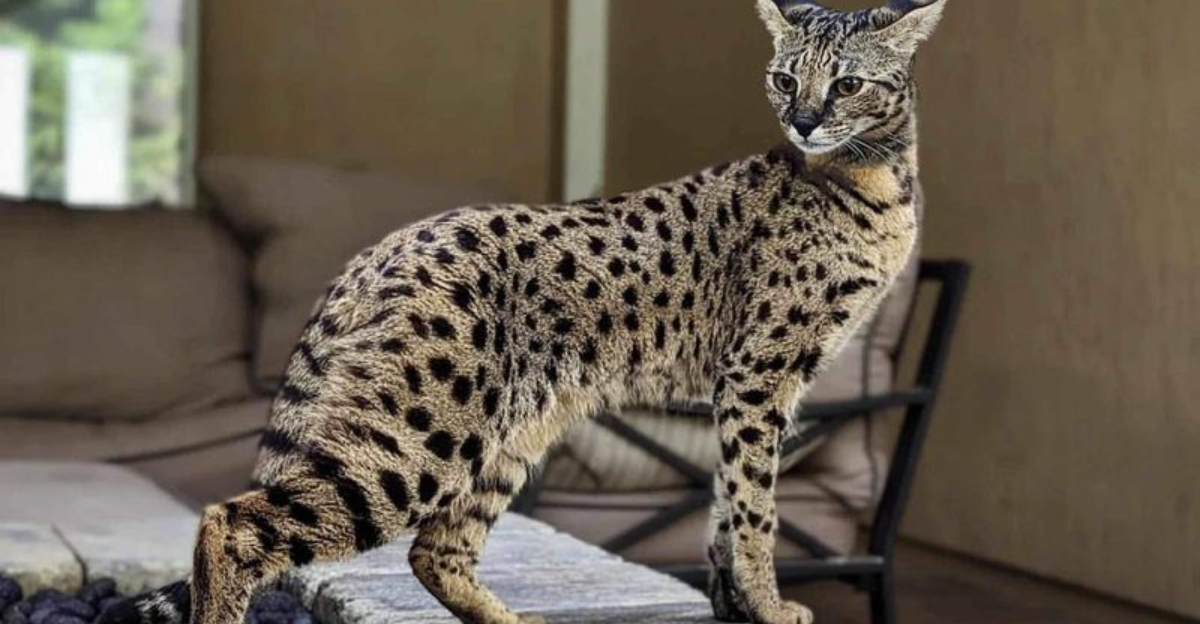Cats have long been cherished as companions, but some breeds blur the lines between wild and domesticated, posing unique challenges for pet owners.
While their exotic appearances can be alluring, experts caution against keeping certain cat breeds as pets due to their complex needs and potential hazards. This article explores such cat breeds that may not be suitable for domestic life.
1. Serval
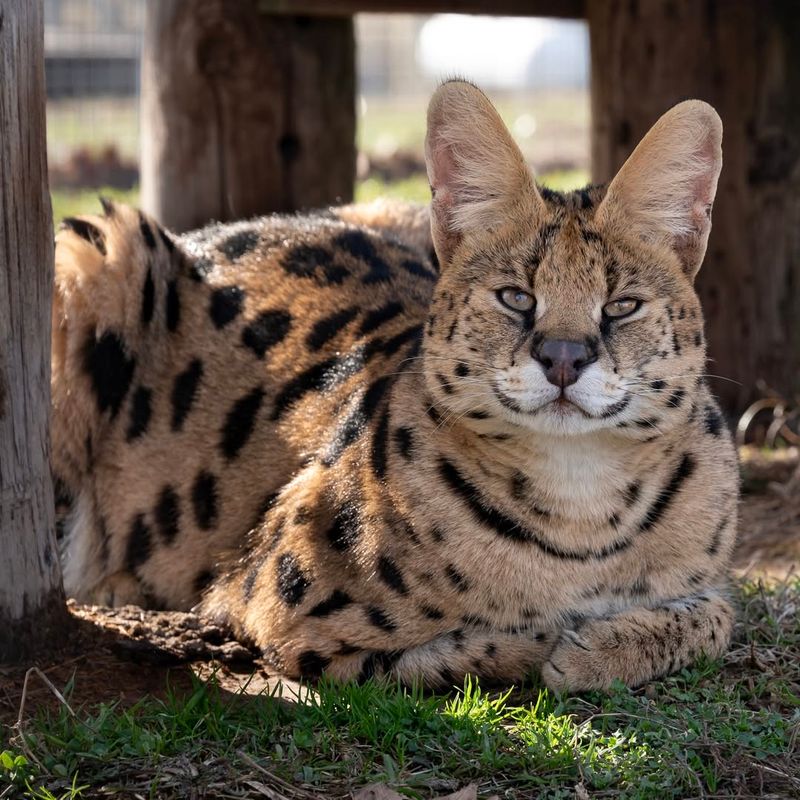
The serval is a wild cat native to Africa, renowned for its striking appearance and impressive agility. Its long legs and large ears make it a superior hunter, capable of leaping several feet in pursuit of prey. While its exotic allure can tempt cat enthusiasts, the serval’s wild instincts and specific care requirements make it a challenging pet.
In captivity, servals demand a diet that closely mimics their natural intake, including whole prey. Additionally, they require ample space to roam and express their natural behaviors, which is difficult to provide in a typical household setting. Their predatory nature poses risks to other small pets, and their strength means they can cause unintentional harm.
Servals can be unpredictable, and even well-socialized individuals may revert to wild behaviors when stressed. These cats are also known for their loud vocalizations and strong scent-marking habits. Owning a serval often requires special permits and adherence to strict regulations, which vary by location.
In short, while servals are undoubtedly fascinating creatures, their care extends far beyond the capabilities of the average pet owner. Potential owners should deeply consider whether they can meet these demanding needs before bringing a serval into their home.
2. Bengal Cat (F1 or F2 Generations)

Bengal cats, particularly those of the F1 and F2 generations, are hybrids of domestic cats and the Asian leopard cat. These early-generation Bengals retain many wild traits, making them a handful as household pets. Their energy levels are exceptionally high, requiring significant physical and mental stimulation to prevent destructive behavior.
These cats are not only physically active but also highly intelligent, necessitating interactive play and complex toys to keep them engaged. Without proper outlets, Bengals can become bored and resort to scratching furniture, climbing curtains, or finding other creative ways to express themselves. They are also known for being vocal, often communicating with distinctive chirps and yowls.
Due to their wild ancestry, early-generation Bengals might exhibit territorial behaviors and have a stronger prey drive compared to fully domestic cats. This can make cohabitation with other small pets challenging. In some regions, Bengals require permits or are subject to restrictions, given their hybrid status.
While Bengals can form strong bonds with their owners, providing them with the necessary care and environment can be overwhelming for those unprepared for their unique demands. Prospective owners should assess their ability to cater to these needs before considering a Bengal from an early generation.
3. Caracal
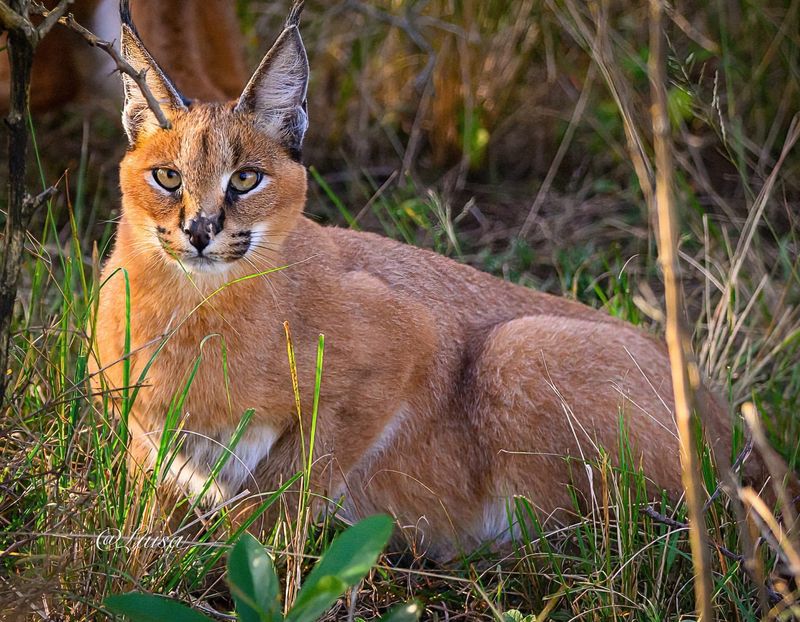
The caracal, with its striking tufted ears and athletic build, is a captivating wild cat native to Africa and the Middle East. Often dubbed the “desert lynx,” it is known for its remarkable jumping ability used to catch birds in mid-flight. Despite its allure, the caracal’s wild nature poses significant challenges for those considering it as a pet.
Caracals require a diet that replicates their natural feeding habits, which includes whole prey. They also need a spacious environment to roam and exhibit their natural behaviors, elements that are difficult to provide in a domestic setting. Their powerful build and agility mean they can easily escape enclosures that are not secure enough.
As a pet, a caracal can be unpredictable. Even when tamed, they may revert to their wild instincts, especially under stress. They are known for their vocalizations and can be destructive if their needs are not met. Additionally, owning a caracal typically involves navigating strict legal regulations and acquiring special permits, which can vary significantly by region.
In essence, while caracals are undeniably intriguing, their care requirements and potential risks make them unsuitable for the average pet owner. Those interested in owning such an exotic animal must carefully evaluate their ability to meet these demands before proceeding.
4. Savannah Cat (Early Generations)
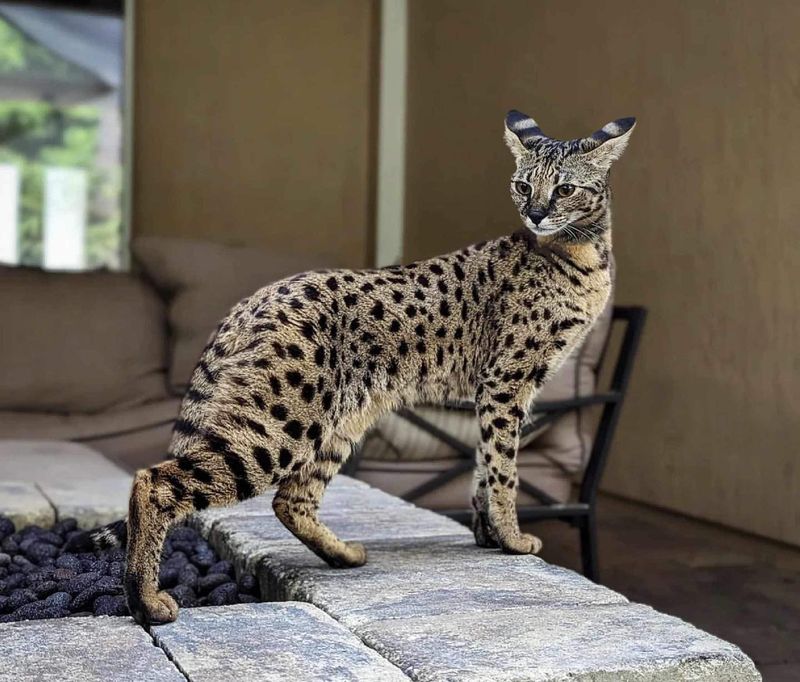
Savannah cats, especially those from early generations, are hybrids between domestic cats and servals. These exotic felines boast long legs, large ears, and a striking spotted coat, making them appear more wild than domestic. Such characteristics, while appealing, come with a host of challenges for potential pet owners.
These cats are highly energetic and require ample physical exercise and mental stimulation, akin to their wild ancestors. Without adequate outlets, Savannahs can develop behavioral issues, such as scratching furniture or excessive vocalizing. Interactive play and environmental enrichment are crucial to keeping these felines happy and healthy.
Early-generation Savannahs may also retain a strong prey drive, posing a risk to small pets. Their wild ancestry can result in territorial behaviors, which may lead to conflicts with other household animals. Furthermore, these cats might require special permits to own, depending on local regulations concerning hybrid animals.
For those considering a Savannah cat, it’s essential to assess whether they can provide the substantial care and environment these cats need. Ownership is a commitment that goes beyond the average pet cat, demanding significant time and resources to ensure their well-being.
5. Chausie
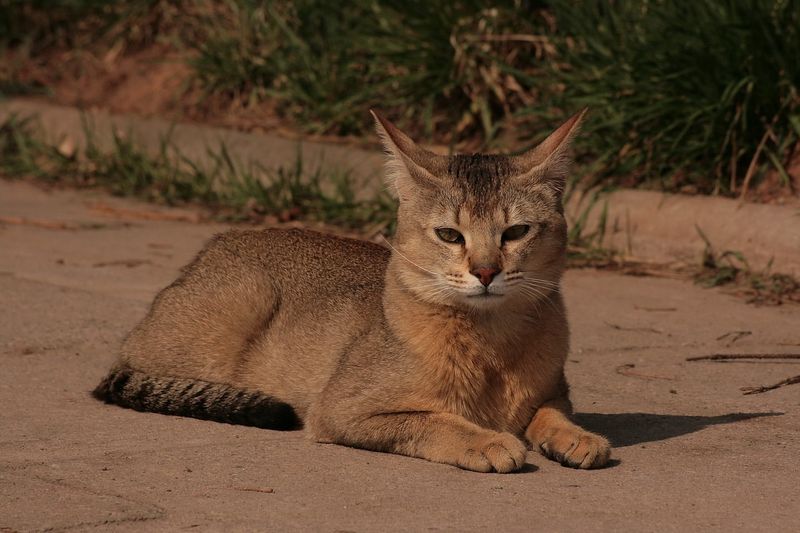
The Chausie, a hybrid breed developed from domestic cats and jungle cats, presents an intriguing mix of wild and domestic traits. With their sleek, muscular build and striking appearance, Chausies can be captivating companions. However, potential owners should be aware of the challenges associated with this breed.
Chausies are extremely active and require a vast amount of physical and mental stimulation. They thrive in environments where they can climb, play, and explore. Without such outlets, these cats may become bored and exhibit destructive behaviors. Interactive toys and activities are essential to keep them engaged.
The Chausie’s social nature demands considerable attention from their human companions. They form strong bonds with their owners but can suffer from separation anxiety if left alone for long periods. Additionally, their wild ancestry may manifest in strong hunting instincts, which could be problematic if other small pets are present.
Prospective Chausie owners must consider whether they can meet this breed’s extensive needs. Providing a stimulating environment and constant companionship is crucial for their happiness. Those unable to offer this level of care may find the Chausie’s demands overwhelming.
6. Bobcat
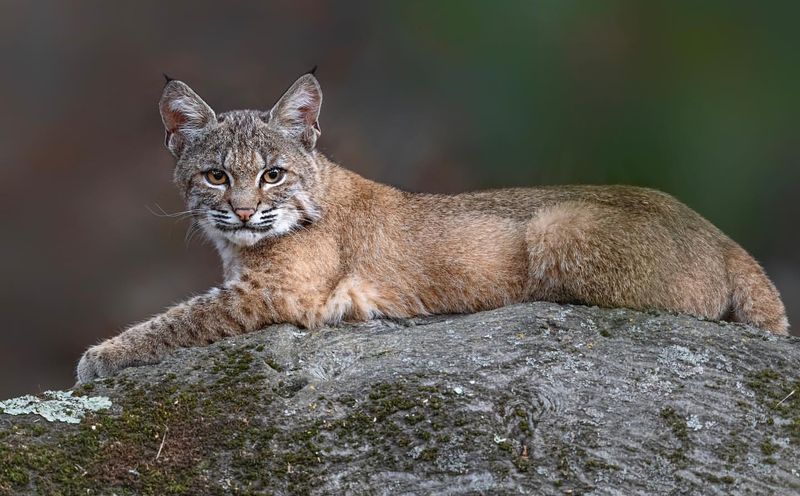
Bobcats, with their distinctive ear tufts and muscular build, are native to North America and possess unmistakable wild characteristics. As medium-sized predators, they play an essential role in their ecosystems, but their wild nature presents significant challenges when considered as pets.
These solitary animals require large territories in the wild, and replicating such an environment in captivity is nearly impossible. Bobcats need extensive space to roam and exhibit natural behaviors, which is difficult to provide in a home setting. Their strong instincts and powerful physiques mean they can be dangerous if not handled correctly.
Maintaining a bobcat as a pet involves crafting a diet that mirrors their natural intake, which includes meat from various prey animals. They are also known for being elusive and unpredictable, which can pose safety risks to owners and other pets. Legal restrictions and the need for special permits further complicate the ownership of bobcats.
Ultimately, while bobcats are fascinating creatures, their care requirements and potential risks make them unsuitable for domestication. Prospective owners should thoroughly evaluate their ability to meet these demands before considering a bobcat as a pet.
7. Lynx (Various Species)
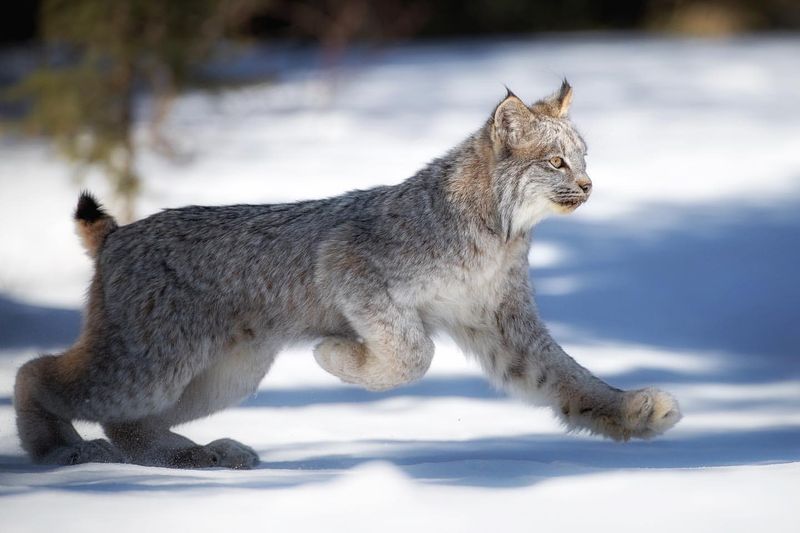
Lynxes, with their tufted ears and thick fur, are striking wild cats found across the Northern Hemisphere. These solitary hunters are well-adapted to cold climates, but their wild nature presents considerable challenges for those considering them as pets.
Lynxes require large territories and specific environmental conditions to thrive, which are difficult to replicate in captivity. Their natural diet consists of various prey animals, and maintaining such a diet in a domestic setting is challenging. Additionally, their strength and agility make them potential escape artists from enclosures that aren’t secure enough.
These cats can be unpredictable and may revert to wild behaviors, especially when stressed. Even with proper socialization, lynxes can pose risks to humans and other pets due to their size and power. Legal considerations, including special permits and regulations, add another layer of complexity to owning a lynx.
In summary, while lynxes are undeniably beautiful and intriguing animals, their care demands and potential dangers make them unsuitable for most pet owners. Thorough consideration and preparation are crucial for anyone thinking of taking on the responsibility of a lynx.
8. Hybrid Leopard Cat Mixes
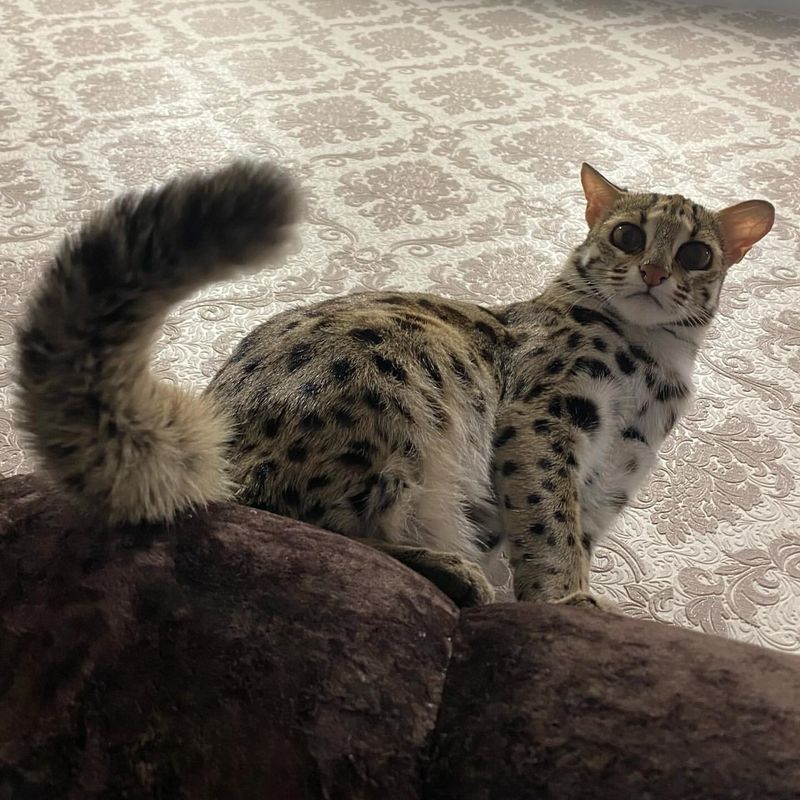
Hybrid leopard cat mixes, resulting from the crossbreeding of domestic cats and Asian leopard cats, exhibit a striking appearance and energetic demeanor. While their exotic looks may tempt cat lovers, these hybrids come with unique challenges that may not suit every household.
These cats often inherit the high energy levels and hunting instincts of their wild ancestors, requiring ample physical exercise and mental stimulation. Without such outlets, they can become bored and resort to destructive behaviors. Engaging them with interactive toys and activities is essential to maintain their well-being.
Hybrid leopard cat mixes may retain a strong prey drive, posing risks to small pets. Their territorial nature can also lead to conflicts with other animals in the household. Furthermore, these hybrids might require special permits or be subject to regulations, depending on local laws regarding hybrid animals.
Prospective owners should carefully evaluate their ability to provide the necessary care and environment for these hybrids. While they can form strong bonds with their owners, meeting their complex needs requires significant commitment and resources.
9. Ocelot

The ocelot, known for its magnificent coat and distinctive markings, is a small wild cat native to the forests of Central and South America. Despite its alluring appearance, the ocelot’s wild instincts and specific care needs make it a challenging pet.
Ocelots thrive in dense jungles, where they have ample space to roam and hunt. Replicating such an environment in captivity is nearly impossible, and their natural diet of small mammals and birds is difficult to maintain in a domestic setting. Moreover, their strong predatory instincts can pose risks to other pets in the household.
These cats are also known for their vocalizations and can become destructive if their needs are not met. Legal restrictions on owning ocelots are stringent in many areas, requiring special permits and often significant modifications to living spaces to accommodate their needs.
Ultimately, while ocelots are captivating creatures, their care requirements and potential hazards make them unsuitable for most pet owners. Those interested in keeping an ocelot must thoroughly research and prepare to meet these challenges, ensuring they can provide the necessary environment and care.
10. Jungle Cat Hybrids
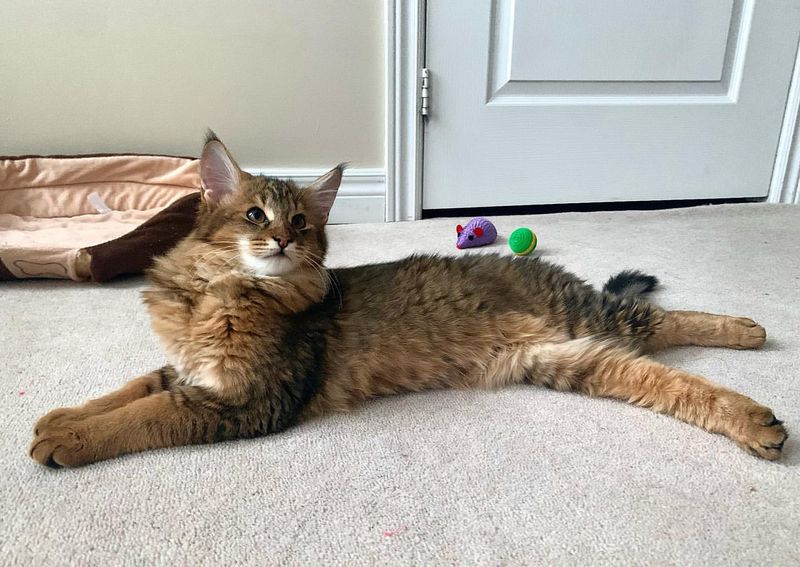
Jungle cat hybrids, born from the crossbreeding of domestic cats and jungle cats, present an intriguing blend of wild and domestic traits. With their sleek coats and athletic builds, these cats can be stunning companions, but they come with a set of challenges that potential owners must consider.
These hybrids are known for their high energy levels and require significant physical and mental stimulation. Without enough outlets, they can become bored and exhibit destructive behavior. Providing a variety of toys and interactive activities is crucial to keep them engaged.
Jungle cat hybrids may retain strong hunting instincts, posing risks to smaller pets. Their territorial nature can also lead to conflicts with other household animals. Additionally, their hybrid status can mean they require special permits or are subject to local regulations.
Prospective owners should carefully assess their ability to meet the needs of jungle cat hybrids. While these cats can form strong bonds with their owners, they require a commitment to providing the stimulating environment and care necessary for their well-being.

